Jude started violin last week. After his week at strings camp, he was utterly smitten with the idea of learning more. He’s literally been around violins his whole life; Birdie’s first lessons took place in the weeks just before his birth. Back then, we were novice violin parents— not terribly sure what our role was, unaware of what to expect during lesson time or in at-home practice. Since Jude is our fourth strings player, we’re a little less green, but still in awe of the process that takes a child from learning how to hold a fragile instrument without breaking it to actually bringing its voice out into the world. It doesn’t happen overnight. It’s far from seamless. But it’s a precious learning journey that I look forward to taking with yet another of my children.
Perhaps your child, too, is interested in the violin. You won’t be surprised to learn that this isn’t a “catch and release” type activity. Even older kids need parental support in learning to play and digging in to the basics of theory in the beginning. You can make or break your child’s love of the violin— and their potential success in learning to play— by being part of the process. But how?
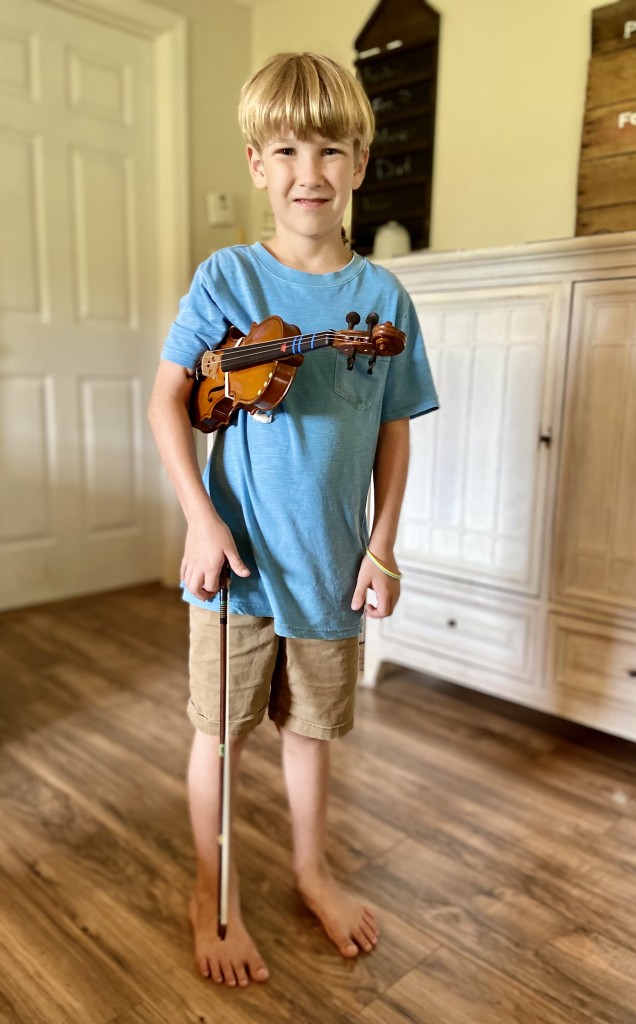
Find An Excellent Teacher
Some people completely disagree with me on this, and that’s fine. But here’s my personal take: while your friend who played violin through high school may be a perfectly serviceable tutor, music instruction is an investment worth making. Don’t cheap out here. While a fabulous teacher needn’t be the most expensive one in town, chances are good that an excellent teacher— one who loves the instrument, who is continually keeping his or her skills sharp, and one who can convey the material with passion— will rarely be free. You want a teacher who is actively engaged in playing for pleasure, certainly, but quite possibly even professionally or in some other capacity.
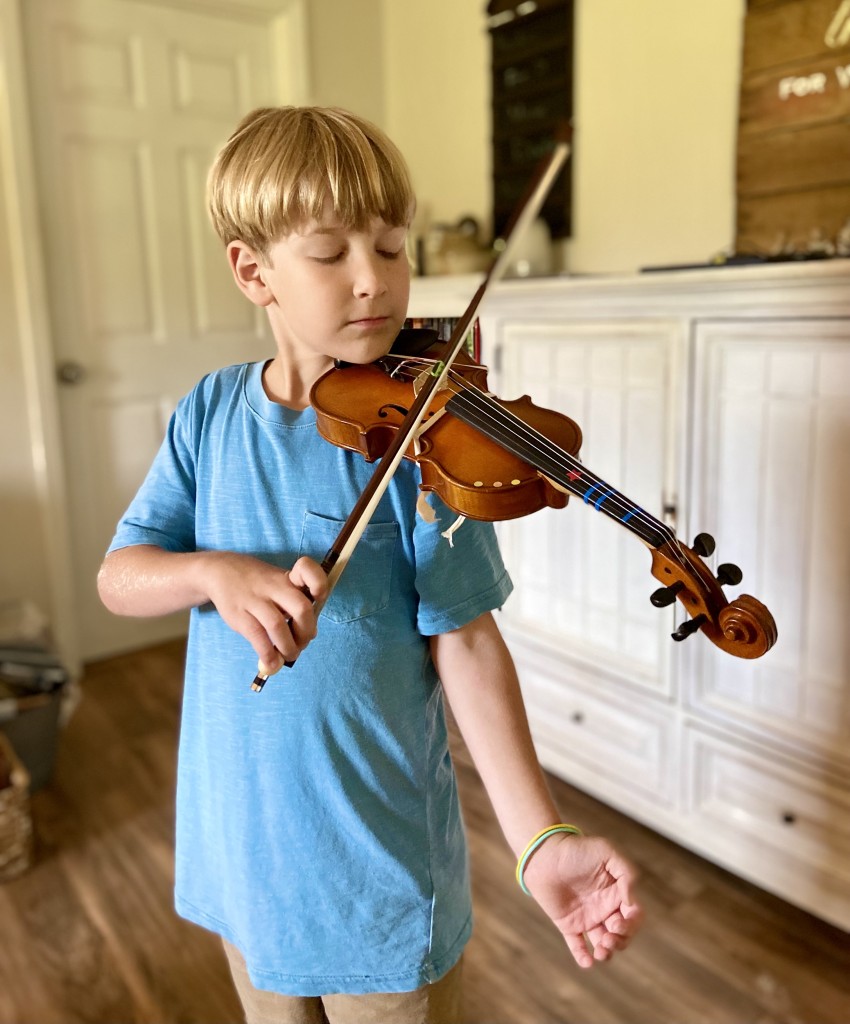
Attend Lessons, and Pay Attention
It can be tempting to send your child into lessons alone, and while that may need to be the case from time to time (I totally get it!) it’s not optimal. Your presence in the room allows you to learn alongside your child. Maybe, like me, you’re starting in a place where even the names of the strings are an unknown. Be a student as well. Learn the parts of the violin, the note names, everything. Pay particular attention, too, to the verbiage your child’s teacher uses in explaining concepts. Our teacher, for example, uses terms like, “monkey fingers,” and “Mr. Tall Man,” in describing bow holds. Using those same terms at home during practice reinforces the lesson and gives consistent reminders.
Another benefit of being present (physically and mentally) in lessons is that you are in the know. Understanding what parts of a piece are giving a child trouble, or hearing the teacher praise a particular skill gives you insight into how to make your home practice that much more effective. Take notes if you need to. I am not above asking to snap a quick photo of a particular finger placement or repeating back directions to double check that I have the right details to focus on for the week ahead. You are paying for this brief instruction window— use it!
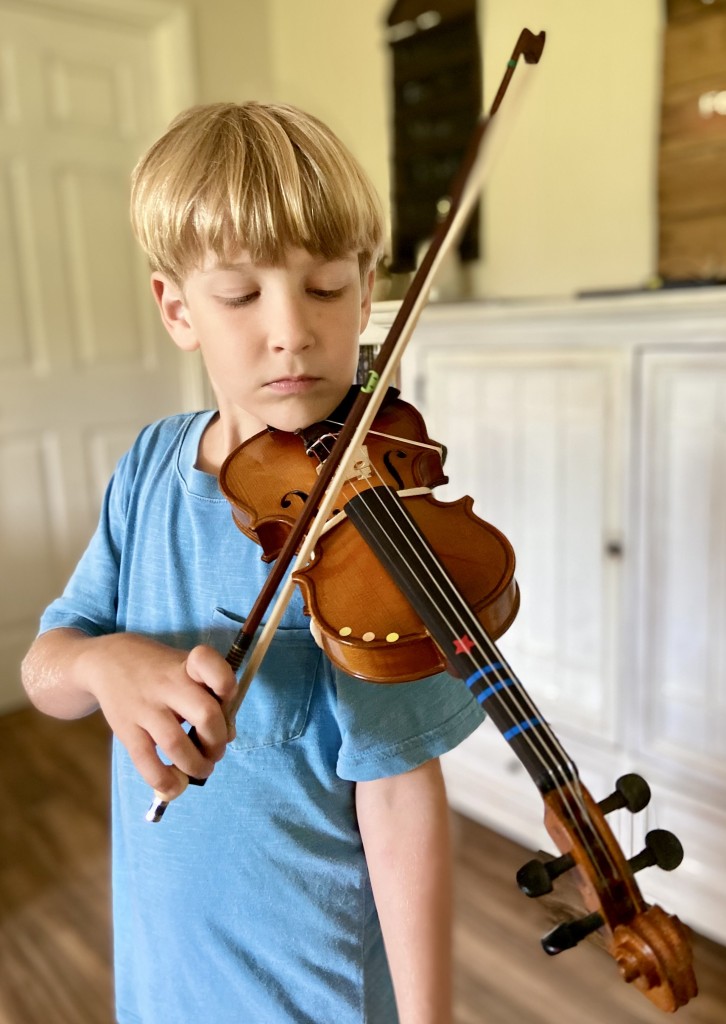
Consistent Practice Makes… Better
Home practice sessions are really where the magic happens. Your child’s teacher only has 30/45/60 minutes per week in which to guide the learning process. Every other day of the week, you can facilitate exponential growth by expanding on that initial burst of learning. Be consistent! Daily practice is best, and if you can hit a rhythm in terms of timing, I’ve found that that has been an important factor for some of my kids as well. At the bare minimum, set a goal: 5 days a week. Ask the teacher for a recommended practice length, and make that part of your day.
Did I just say your day? Yep. I did. While older kids might not need the same daily framework and feedback you can provide, you should still be accessible. But young kids, just starting out? The onus is on you, the parent, to make sure practice happens, and that it’s fruitful. This is where you help your child make the connections between what happens at the lesson and how it looks in at-home practice time. Use those terms you learned, encourage the habits the teacher is trying to build, and once again, take notes. You can offer insight to the teacher as to how your child is progressing, what they’re struggling with, etc.
A word here on progress. My personal experience is that the first year of violin can be… painful. There’s so much to learn, and those little instruments can be hard on the ears, especially in the hands of kids who don’t know what they’re doing. Even if you’re putting in twenty minutes a day, five days a week, at the end of year one you may be tempted to call it a wash. It’s not. You’re laying a foundation. Hang in there!
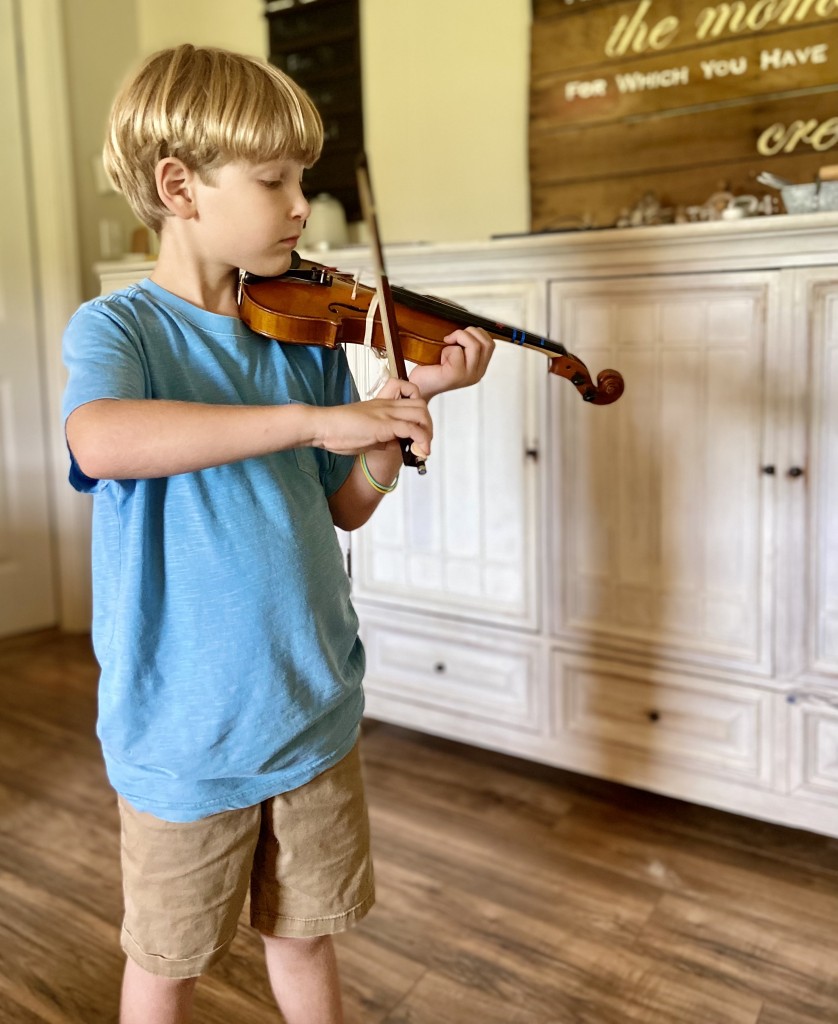
There’s More to Violin Than Playing Music
Your teacher will work with your child on how to hold their bow, how to stand, note names, and how to clap out rhythms. You will be tempted to think this is all “extra.” It’s not. This is as important as playing the right notes. Make sure that you have a positive attitude about the whole package, and your child will naturally find this part as fun as squeaking out his first Twinkle variation.
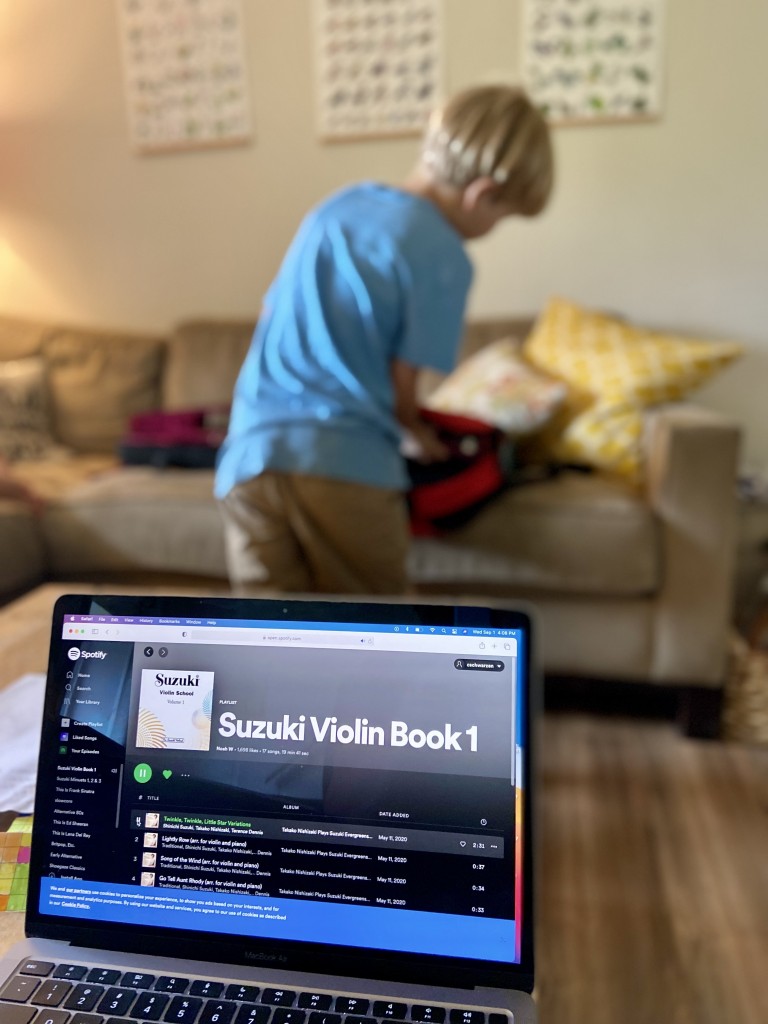
The CD Is Your Friend
If your child is using the Suzuki Method, listening is a key component. I really struggled to grasp this for quite a while, and even then, I struggled to implement it. Most books come with a CD recording of the pieces to be learned, and the idea is that you listen to them and learn to play them. For some reason, my kids can’t keep track of a CD to save their life, and I couldn’t remember to allot time to play them. Enter Spotify. Guys, there are Suzuki albums on Spotify. No excuse not to listen now! Just play the pieces as often as your teacher suggests and watch your child suddenly begin to decode rhythms even faster than before.
All of this sounds like a lot, doesn’t it? To be honest, in the first year, it is. There are definitely days when I would much rather skip yet another round of “Name That Rhythm.” But having seen how much more fun it is for children to steadily (if slowly) progress, I know that I owe it to Jude to be not just available but enthusiastic as he makes his own discoveries and meets milestones with his new instrument. I’m looking forward to the day when our little home trio becomes a bona fide quartet, able to lead us in Christmas songs and simple hymns. Learning music is a gift not just to the student learning, but to the world as a whole. I look on my role as facilitator as a small piece of that blessing that I can give my family and our future.